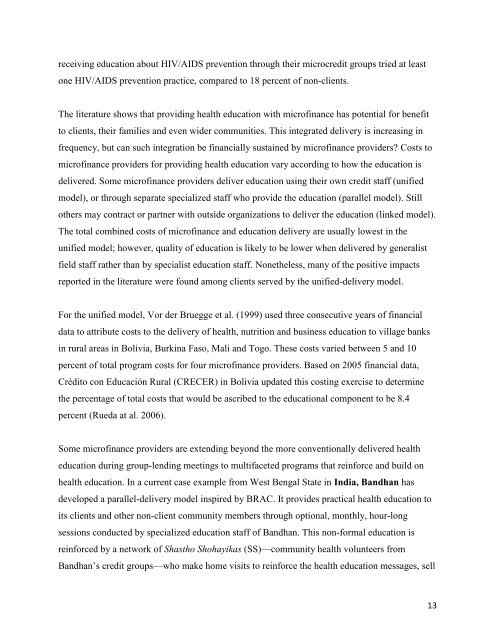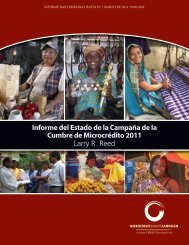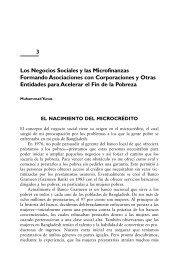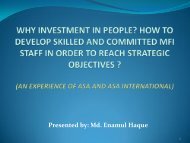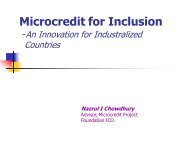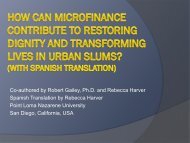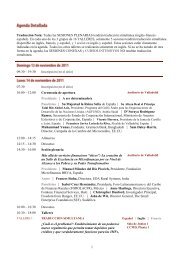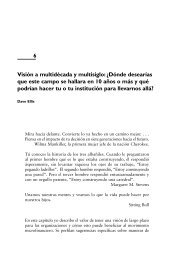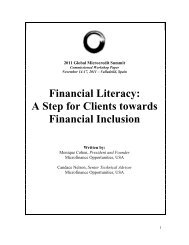Integrating Microfinance and Health - Global Microcredit Summit 2011
Integrating Microfinance and Health - Global Microcredit Summit 2011
Integrating Microfinance and Health - Global Microcredit Summit 2011
You also want an ePaper? Increase the reach of your titles
YUMPU automatically turns print PDFs into web optimized ePapers that Google loves.
eceiving education about HIV/AIDS prevention through their microcredit groups tried at leastone HIV/AIDS prevention practice, compared to 18 percent of non-clients.The literature shows that providing health education with microfinance has potential for benefitto clients, their families <strong>and</strong> even wider communities. This integrated delivery is increasing infrequency, but can such integration be financially sustained by microfinance providers? Costs tomicrofinance providers for providing health education vary according to how the education isdelivered. Some microfinance providers deliver education using their own credit staff (unifiedmodel), or through separate specialized staff who provide the education (parallel model). Stillothers may contract or partner with outside organizations to deliver the education (linked model).The total combined costs of microfinance <strong>and</strong> education delivery are usually lowest in theunified model; however, quality of education is likely to be lower when delivered by generalistfield staff rather than by specialist education staff. Nonetheless, many of the positive impactsreported in the literature were found among clients served by the unified-delivery model.For the unified model, Vor der Bruegge et al. (1999) used three consecutive years of financialdata to attribute costs to the delivery of health, nutrition <strong>and</strong> business education to village banksin rural areas in Bolivia, Burkina Faso, Mali <strong>and</strong> Togo. These costs varied between 5 <strong>and</strong> 10percent of total program costs for four microfinance providers. Based on 2005 financial data,Crédito con Educación Rural (CRECER) in Bolivia updated this costing exercise to determinethe percentage of total costs that would be ascribed to the educational component to be 8.4percent (Rueda at al. 2006).Some microfinance providers are extending beyond the more conventionally delivered healtheducation during group-lending meetings to multifaceted programs that reinforce <strong>and</strong> build onhealth education. In a current case example from West Bengal State in India, B<strong>and</strong>han hasdeveloped a parallel-delivery model inspired by BRAC. It provides practical health education toits clients <strong>and</strong> other non-client community members through optional, monthly, hour-longsessions conducted by specialized education staff of B<strong>and</strong>han. This non-formal education isreinforced by a network of Shastho Shohayikas (SS)—community health volunteers fromB<strong>and</strong>han’s credit groups—who make home visits to reinforce the health education messages, sell13


